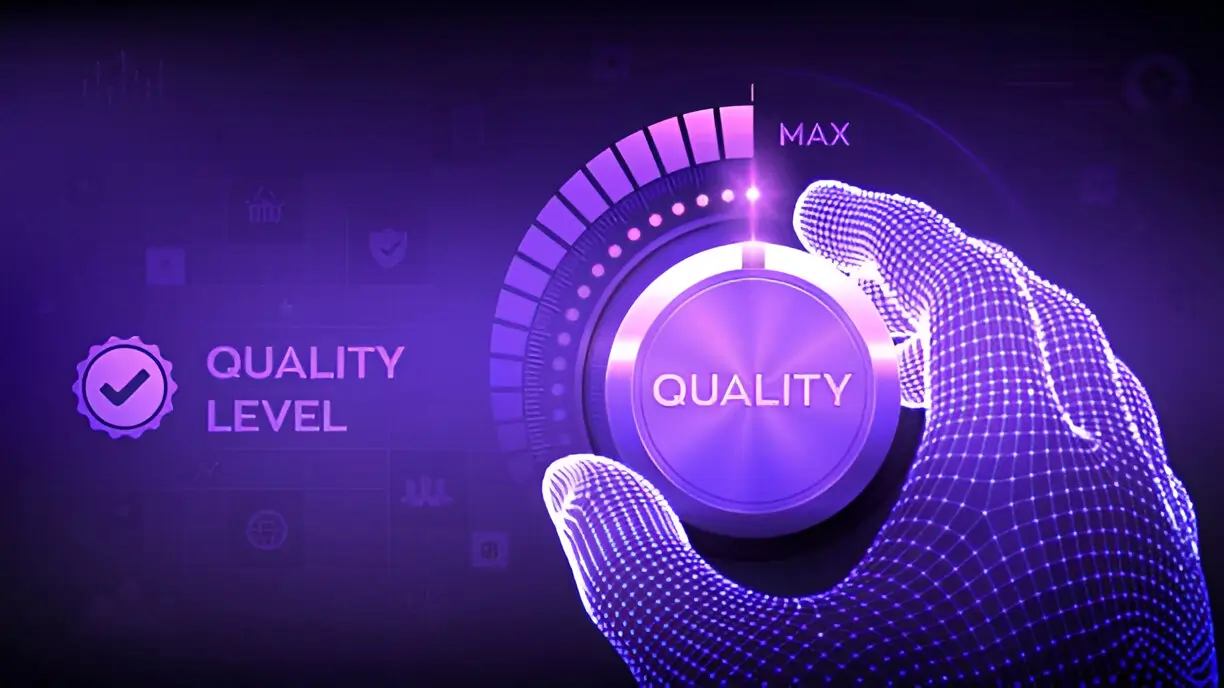AI testing is essential for handling the growing complexity of modern applications. Traditional manual or scripted automation is no longer sufficient to meet fast-paced quality demands. AI testing uses machine learning to analyze past test patterns, predict potential failures, and optimize test coverage.
It enhances accuracy, accelerates feedback, and reduces maintenance overhead. Smart test automation powered by AI improves quality across the software development lifecycle by enabling intelligent test creation, prioritization, and execution.
What Is Smart Test Automation?
Since we are aiming to use AI in software testing for implementing smart test automation, it is only fair that we start our discussion by laying the basic understanding of this advanced testing process. With smart test automation, you can further expand the capabilities of traditional test automation by using various advanced technologies like the ones mentioned below:
- You can use artificial intelligence and machine learning to implement predictive analytics and adaptive testing to further improve the quality assurance and troubleshooting procedures.
- You can also use self-healing test scripts to update dynamically whenever there is a change in the element of the application or even the placement of all the user interface elements.
- With the help of intelligent test orchestration, you can optimize the test execution process and also the total resources that are being consumed by these individual test cases.
- By using natural language processing, you can turn your plain English documents, like business requirements and application details, into automation test scripts that can be understood and executed by your testing environment.
- Finally, you can also implement real-time testing analytics to have deeper insights into the decision-making procedures.
If we want to summarize this entire concept, we can say that it is a proactive, intelligent, and context-aware approach to modern automation testing. The goal of this process is to move the quality assurance procedures from a reactive cost center to a strategic enabler for modern innovation.
If you are still not convinced by the massive benefits of automation testing with AI compared to traditional automation testing, we have created a comparison table below that can help you further understand this concept:
| Feature/Capability | Traditional Automation | Smart Test Automation |
| Script Maintenance | Manual and time-consuming | Self-healing capabilities with ML |
| Test Coverage | Limited by manual effort | AI-driven prioritization and scalability |
| Test Execution | Sequential or parallel at best | Dynamic, data-driven, and optimized |
| Adaptability | Low, breaks with UI changes | High, adapts to changes automatically |
| Insights | Basic pass/fail reports | Predictive analytics and risk assessment |
| Learning Capabilities | Static | Continuously learning from past test runs |
Major Technologies for Smart Test Automation
Let us now divert our attention towards some of the major technologies that you must be aware of for implementing smart automation testing within your test environment:
- Machine learning algorithms will help you to identify flaky test cases, predict the failure points, and also optimize the test coverage depending on past failure trends. With the help of these insights, you can focus on high-risk areas, reduce the test cycle times, and also improve the overall accuracy of your test scripts.
- With the help of AI-enabled tools like Functionaize and TestIm, you can detect changes within the application’s user interface. Depending on the patterns that you predict and find in this step, you can automatically adjust the test scripts to incorporate the changes without having the bottleneck of constant manual test maintenance.
- As we already mentioned earlier, natural language processing will allow the non-technical members of the team to write automation test cases in plain English. After this process, you can use dedicated tools like Katalon Studio to convert them into test cases. This will allow normal business users and product managers to participate in the testing process.
- With the help of AI-powered visual validation tools, you can compare the user interface screenshots across the test scripts. This approach will help you find visual anomalies and also ensure the pixel-perfect user experience, usability of the device, or the platform implementation.
- Using the capabilities of smart automation platforms, you can understand the test execution data to detect patterns and recommend test cases which are likely to fail. Depending on these recommendations, you can implement orderly rectification measures.
Advantages Of Smart Test Automation
Now that you are aware of what smart test automation and all the technologies that you need to implement this process, it is very important to have a clear idea about all the advantages that you can achieve by implementing this process. To help you with this knowledge, let us divert our attention towards the following points:
- You can improve and increase the test coverage while reducing the efforts for each individual testing process. This is because smart automation will help you identify the untested code paths, prioritize the critical user journeys, and also run thousands of different test cases on multiple devices and browser combinations.
- With the help of smart test automation, you could ensure that you are reducing the deployment time for your application. This is because by automating the test generation process, execution, maintenance, and analysis, you can massively reduce the test cycles and also align the patterns with DevOps and agile methodologies.
- The proper implementation of smart automation testing will also have a crucial role in improving the accuracy and reliability of a test case. This is because artificial intelligence will help you reduce false positives and false negatives to ensure the stability of your test cases and have higher confidence in results. This entire cycle will reduce noise and increase trust in the automation test releases.
- You will have lower maintenance overhead with AI testing, as by using self-healing capabilities with the test scripts, they can adapt themselves according to the updates of the application. These approaches will reduce the need for constant updates and also the requirements of a manual tester’s oversight.
- With this technology, you can add shift left, which adds early testing, and shift right testing, which adds observability and monitoring in production. The benefit? Implement end-to-end quality assurance to provide the best experience to your customers.
How To Build A Smart Test Automation Strategy?
Are you excited to implement smart test automation using the testing environment? To help you with the implementation process, we have mentioned all the steps and factors that you must consider to ensure a smooth transition:
- Assess The Testing Maturity: The first step in the implementation phase is to understand your current testing practices, your automation testing coverage, skill levels, and the available tooling ecosystem. These practices will help you create a baseline understanding of what you already have and then proceed with what you want to achieve with smart automation testing.
- Choose The Right Tools: When implementing AI for software testing, using the right tools and platforms that have AI-powered automation testing, visual testing, or self-healing capabilities, and pipeline integration will play a crucial role in ensuring the success of the entire implementation process.
For example, AI-powered platforms like LambdaTest can be extremely useful for running test cases across thousands of browser, device, and OS combinations directly from the cloud. It supports both manual and automated testing, helping teams ensure broad compatibility and reliability.
LambdaTest is a GenAI-native test execution platform that enables scalable testing across 3000+ browser and OS combinations, making it easier to maintain quality at speed while reducing infrastructure overhead.
- Start Small And Scale: Since the concept of artificial intelligence in application testing is completely new, we would never recommend that you directly migrate all your test cases to this new process. Instead, the most sensible approach would be to choose a non-core test case and experiment on it with artificial intelligence and machine learning.
Depending on the results that you achieve in this experimental implementation, you can scale accordingly and incorporate all the test cases as well. This targeted approach will also help you to win the confidence of your stakeholders while you are migrating to this new technology.
- Upskill The Team: Like the implementation of any new technology, these tools of AI for software testing will also come with their own share of implementation and learning challenges. To ensure that your team does not face any such obstacles, you must set up proper training mechanisms and workshops so that they can get accustomed to this new implementation. The proper use of all the learning documentation available out there will also help reduce the learning curve to ensure that you’re starting the implementation process as soon as possible.
- Integrate With DevOps Methodologies: While you are adding smart automation testing, you must ensure that these test suites can be easily added to your build pipeline system. This approach will help achieve faster feedback and also ensure continuous testing of your applications. With this implementation, you can also ensure that you are finding and removing errors as soon as they appear within the infrastructure of the application and not cause harm to its major functions.
- Monitor And Adjust: To wrap the implementation, use various analytic tools and dashboards to keep track of important metrics like defect leakage, test coverage, and mean time to resolution. By keeping record of all these metrics, you can easily refine your testing strategy to ensure that you are accessing its complete potential.
The Bottom Line
Based on all the areas that we covered in this article, we could easily say in conclusion that smart test automation is a core part of how you approach quality testing in the future. By using all the capabilities and use cases that we have mentioned in this article, you can move from reactive quality assurance to predictive, preventive, and proactive quality engineering.
As we all know, scalability and satisfaction are becoming the driving parameters of an application’s success. In such an industry, you must have a forward approach so that you can ensure that you’re incorporating all the required changes and updates to maintain the credibility of the application and your brand as a whole.
Read more: The Strategic Advantage of Implementing AI in Your QA Workflow
Understanding The Engine Of Web Automation: A WebDriver Deep Dive
Dubai Travel Agency: Desert Buggy & Quad Guide




